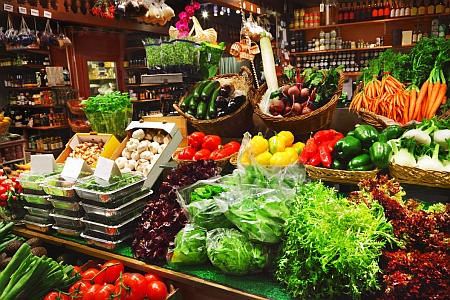New U.S. food safety rules will impact carriers
The U.S. is modernizing its food safety regulations, introducing sweeping changes that will include new requirements for trucking companies.
The Food Safety Modernization Act (FMSA) includes seven major proposed rules and the most recent rule introduced, covering the sanitary transportation of human an animal food, will have the greatest impact on carriers.
FMSA represents the first major overhaul of U.S. food safety regulations since the current rules were written in 1938.
“This proposed rule will help reduce the likelihood of conditions during transportation that can lead to human or animal illness or injury,” said Michael Taylor, the U.S. Food and Drug Administration’s deputy commissioner for foods and veterinary medicine. “We are now one step closer to fully implementing the comprehensive regulatory framework for prevention that will strengthen the FDA’s inspection and compliance tools, modernize oversight of the nation’s food safety system and prevent food borne illnesses before they happen.”
Mike Kashtock, consumer safety officer with the FDA’s Center for Food Safety and Applied Nutrition, said carriers that already apply Hazard Analysis Critical Control Point (HACCP)-type principles to their operations wouldn’t have trouble complying with the new requirements. However, trucking companies that are sloppy when it comes to cleaning, loading and maintaining their equipment will have to improve. The new rules will also place the onus on carriers and food companies to prove to FDA that they are safely handling food products throughout the supply chain.
“The 1938 law basically says you can’t produce foods, store foods or transport foods under unsanitary conditions and then puts the burden on FDA to go out and do inspections and find violations and take actions,” said Kashtock. “The FSMA changes the paradigm and requires the broader industry to go through the preliminary step of analyzing potential things that could go wrong and then put measures in place to make sure those things are monitored and controlled so they don’t go wrong, or if they do go wrong, they’re spotted very quickly and the food is taken out of the channels of sale. All the traditional requirements of the 1938 law remain but the preventive elements that were never as a matter of law the industry’s responsibilities, are now the industry’s responsibilities,” he added.
The proposed rule establishes requirements for vehicles and transportation equipment, transportation operations, training and record keeping. As one example, shippers will be required to inspect a vehicle for cleanliness or contamination prior to loading food that is not completely enclosed by its container. Carriers will be required to establish written procedures, subject to record-keeping requirements, for cleaning their vehicles and equipment.
“Many companies practice those elements voluntarily,” Kashtock acknowledged. “What the FSMA really has done is taken the current practices that have evolved since the 1938 law and made them not voluntary. A lot of what this new food safety law would require when the regulations get finalized, proactive firms have been doing for quite some time.”
The three primary areas identified under the rules as the most likely causes of contamination during transport include: temperature control, the transportation of bulk product in tankers; and cleanliness of cargo bays. Rather than rewrite the rulebook, Kashtock said FDA opted to encourage the use of best practices that already exist within the food industry.
“Best practices exist and they are quite stratified,” he said. “The juice industry has its unique best practices it has developed, the grain and feed industry has its own. There are best practices and model codes that have been around for quite some time and are actually in use, probably in the vast majority of situations right now.”
Kashtock said incidences of food contamination during interstate transport are actually quite rare. It’s more of a problem on the local level.
The court-ordered deadline for the final rule to be published is March 31, 2016. Once published, it will be at least another year before it’s implemented, meaning carriers won’t have to comply with the new rules until 2017 (for large businesses, defined as having more than US$25.5 million in annual revenue) and 2018 for small businesses.
“Each year, food borne illness strikes 48 million Americans, hospitalizing a hundred thousand and killing thousands. I thank the President and members of Congress for recognizing that the burden that food borne illness places on the American people is too great, and for taking this action,” said Margaret Hamburg, Commissioner of Food and Drugs.






